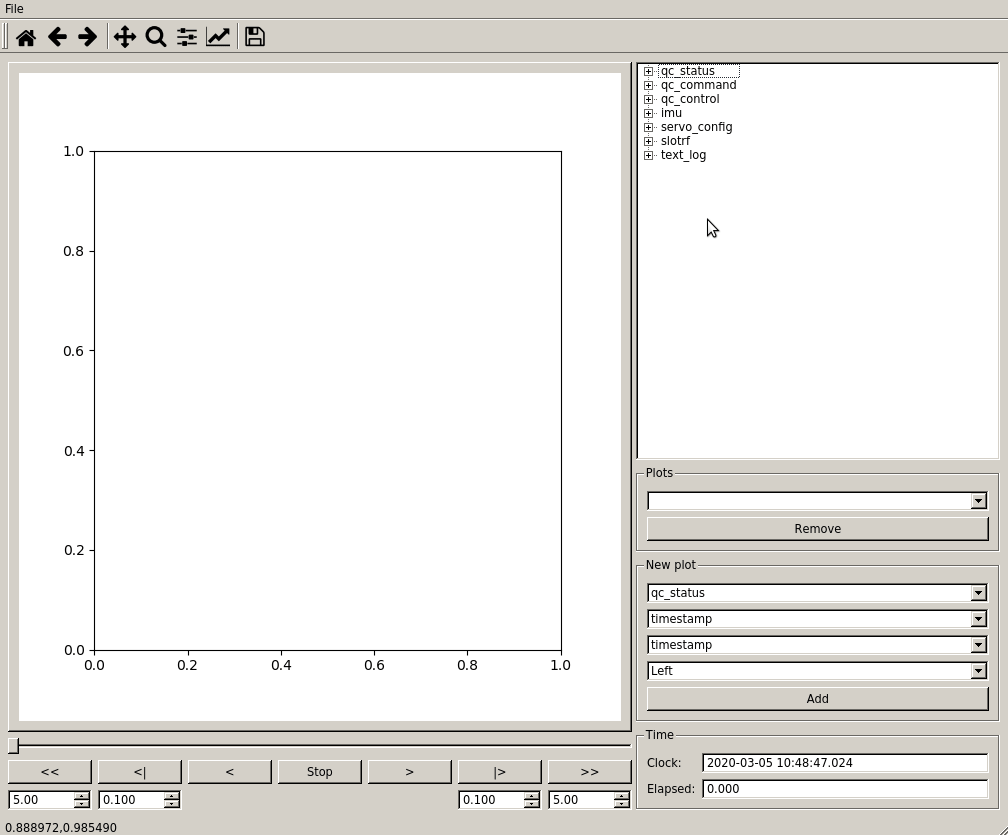This is part of a continuing series on updated diagnostic tools for the mjbots quad A1 robot. Previous editions are in 1, 2, 3, 4, 5, 6, and 7. Here I’ll be looking at one of the last pieces of the puzzle, synchronizing the video with the rest of the telemetry.
As mentioned previously, recording video of a robot running is an easy, cheap, and fast way to provide ground truth information on all of the sensors and actuators. However, it is only truly useful if it can be accurately synchronized in time to the other telemetry streams for the robot.
Options
This was part of the puzzle that I spent a long time thinking about before I got started, as there are several possible options that seemed like they could maybe work:
Visual
The concept here would be to put an LED beacon on the robot that is visible from all angles. It could strobe a synchronizing pattern, like the output from an LFSR which could be identified in the subsequent video frames.
Pros: This should be able to give frame accurate synchronization, and works even for my 1000 fps camera which can’t record audio.
Cons: It is hard to find a good place to mount a light which could be observed from all angles. The top is the best bet, but I have plans to attach further things there, which would then render synchronization infeasible.
Audio
In this concept, I put a microphone on the robot and have it record audio of the environment during its run. Then standard audio synchronization algorithms can be used to align the two streams. I actually included a microphone on the most recent version of the pi3 hat to potentially use this approach.
Pros: This has no visibility requirements, and should be able to give synchronization accuracy well under a single frame of video.
Cons: Getting the microphone data off the pi3 hat was looking to be moderately annoying, as the STM32 which it is connected to is already streaming IMU and RF data back to the robot over its single SPI bus. When I brought up the board, I verified I could get 1kHz audio off, but that isn’t enough to be useful.
IMU
This was the idea I had last, and what I am using now. Here, I slap the side of the robot in a semi-random pattern during the video. That results in an audio signature in the video, as well as lateral accelerometer readings.
Pros: No additional hardware or software is required anywhere on the robot.
Cons: This has worse accuracy than pure audio, as the IMU is only sampled at 400Hz and doesn’t perfectly correspond to the audio found in the video.
Implementation
I took a stab at the IMU version, since it looked to be the easiest and still gave decent performance. I made up a simple python tool which reads in the robot telemetry data, the audio stream of a video file, and lets the user select rough ranges for the audio and video streams to work from.
It then uses scipy.signal.correlate to do its best job of finding an alignment that best matches both data streams, producing a plot of the alignment.

As you can see, the audio rings out for some time after the IMU stops its high frequency response, largely due to the mechanical damping of the robot. However, it is enough for the correlation to work with and give frame accurate results.









